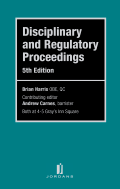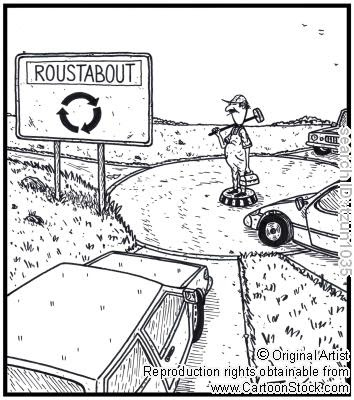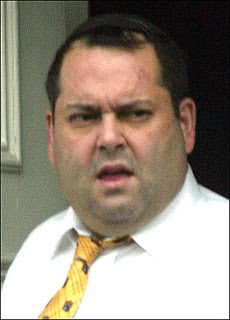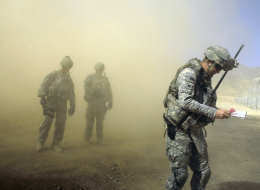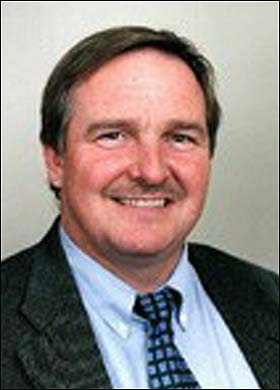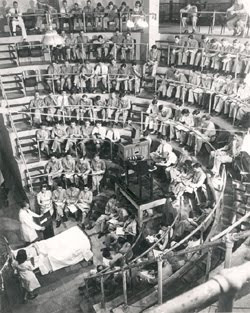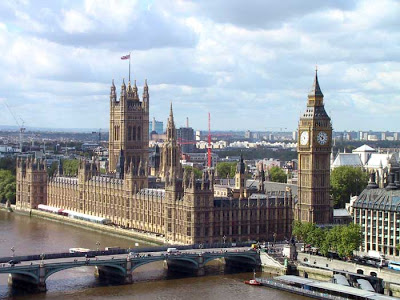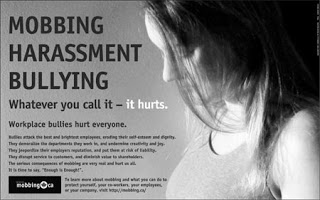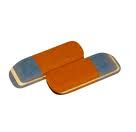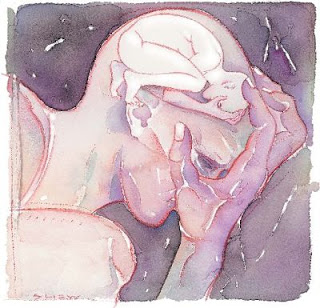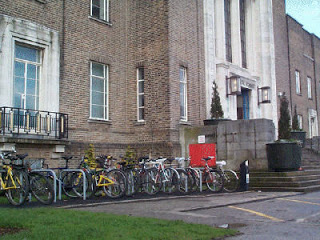
I raised issues about the failure rate of ethnic minority students at Sheffield University medical school in October 1997. This article has been extracted from the material listed on
http://www.examfraud.co.uk/. Refer to the website for detailed evidence. Further material can be accessed in this
Times Higher article. A second article in Times Higher can be accessed
here.
In fairness, it must be emphasized that it is always, without exception, in the interest of the university that students should pass exams. People who engage in discriminatory practices are contravening the interests of the university and add to the workload of their colleagues.
That said I do have a taped conversation with the GMC president Professor Sir Graeme Catto where I discussed the issue of falsifying medical students exam results with him and he accepted that this can happen.
If you read the
NUS Mark My words briefing it says
“When colleges and universities do not have anonymous marking in place, research shows that black students can receive up to 12% lower marks. This anomaly has been vigorously tested by independent bodies with the results consistently demonstrating bias in the scoring process as a root cause.”
Report after report shows that the NHS is riddled with institutionalized racism. As such a student being assessed in such an environment will be most vulnerable. That is one reason why university courses allied to medicine have a disproportionate failure rate among non white students.
Sheffield University has an anonymous marking policy. It says that in 1994 the Senate of the University decided that students names would not be visible to examiners, only their registration numbers. That is far from the truth.
I went to see
Mr. Richard Allan, then MP for Sheffield Hallam. He made representations about this. He wrote to Mr. Page, the Undergraduate Dean of Sheffield medical school on 23/10/97. The letter was faxed through to Mr. Page.
I was concerned about the anonymous marking system adopted by the University in 1994. Mr. Allan said in his letter that it was alleged that the names of the students were in fact
easily identifiable to those doing the marking. We suggest that there was a list of names against the numbers used on exam papers which was known to be available to course tutors. It was further alleged that this had led to a racial bias creeping into the marking whereby a higher proportion of ethnic minority students was failing than would be statistically normal.
I gave the official fail lists to the MP. In the 5th year of the 1996/97 session group of medical student's 27/181 students were of home ethnic origin. Almost exactly 15% at Sheffield medical school at the time there were three subjects taught in rotation. They are Obstetrics and Gynaecology, paediatrics and psychiatry.
Among all those who failed Obstetrics and Gynaecology in that year 7/18 that failed were of ethnic minority. The exam consisted of 25% attachment marks, 12.5% coursework 25% essays and 37.5% Objective structured clinical exam (OSCE) In the OSCE candidates were given a two-digit candidate number to put on their papers. The list of names and numbers was put on a notice board for all to see. On essay papers at Sheffield University there is a confidentiality flap which is very difficult to seal down. Candidates have to write their names underneath the flap. Although there is nothing to stop a student sealing down the flap with cello-tape or stapling it down.
In Paediatrics 5/7 that failed were of ethnic minority. Paediatrics was, under that system 50% continuous assessment, 25% OSCE and 25% clinical exam. If the candidate failed the clinical exam it resulted in an outright fail. In a clinical exam there is no protection of anonymous marking. In fact anonymous marking doesn’t give you any protection at all.
In psychiatry 5/12 that failed were of ethnic origin. This exam consisted of a clinical exam, a written paper and an attachment. Dr. Peters the then undergraduate course tutor in sychiatry and now Undergraduate Dean would openly admit to having the list of names and numbers before the papers were marked. He would insist that the students wrote their names on the papers. Of the students who had to drop down a year into this group of students due to exam failure seven were of ethnic minority. Six were in Obstetrics and Gynaecology.
I saw Mr. Page on 23 October 1997. He admitted to me, Dr Varma (snr) and Mrs. Varma that he knew that Dr Peters was openly flouting the rules on anonymous marking.
In Mr. Page's reply of 30 October 1997 he said
"The Medical School adheres to this policy. However the system cannot guarantee complete anonymity as the identifier of an individual student is the student registration number, access to which is available to nearly every department in the University, via the Management and Administrative computer. Internal examiners do not receive the list of names corresponding to student registration number."
Clearly Mr. Page was economical with the truth. He should have said that the medical school is meant to adhere to the system but they flout it.
In theory, he could face a misconduct charge by the GMC. However he won’t. Firstly he is white, secondly he is a consultant but most importantly he is on very good terms with
Professor Weetman the Dean of Sheffield University Medical School. Given that Weetman is a
GMC member himself nothing will happen. You only have to read Dame Janet Smith’s 5th report to the Shipman inquiry to see that the GMC is an old boys club.
Mr. Page went on to say
"any academic member of staff with a will to identify the name of an individual form their registration number could do so but when faced with having to mark nearly 200 or so scripts to a tight deadline would waste time doing so."
He did not mention the confidentiality flap nor the fact that not every examiner would mark 200 scripts. They don’t mark anywhere near that. Besides if you see my website
http://www.examfraud.co.uk you will see the ways around anonymous marking that they don’t want people to know of.
The question is what about students on courses where there are not so many students? On top of that what about resits where there are very few students?
"Project work submitted for assessment in the first two years of the course uses student registration number as an identifier." In theory, it has been known that such work is done by name, but the work is handed back to the student once marked. "In the latter stages of the course, assessment includes clinical and oral examinations, which are obviously conducted face to face and cannot be anonymous. Individual examiner biasing the whole assessment is minimal.
These safeguards are threefold:
1) A range of assessment at each level of the course ensures that a number of examiners would be responsible for assessing each candidate, with each component of the examination often having a different set of examiners.
If you believe that you will believe that the moon is made of cream cheese.
2) Clinical and oral examinations are conducted by examining pairs, with each examiner marking independently of the other before arriving at an agreed mark.
That is not true they usually confer.
3) The External Examiner is present to moderate marks and to ensure standards are comparable with other medical schools."
What you mean like external examiners like
Professor Ann Mortimer who falsely accused me of being a drug taker on the basis of my exam papers? Or even Professor Mindham who failed one of my projects which was published?
As far as the failure rate of ethnic minority students was concerned he said:
"I am unable to comment on the failure rate of any particular group of students. The school does not routinely monitor failure rates based on race, nationality, ethnic origin or gender but believes the above procedures should ensure that racial bias does not occur."
Mr. Allan was not satisfied and wrote back to Mr. Page on 21/11/97 . He said
"I feel that the introduction of a secure system of student identification for closed book examinations and routine monitoring of failure rates would help the University in responding to allegations of bias."
Catherine Davison a senior member of staff of the Medical School replied on 26/11/97 . In her letter she stated that she had passed on the letter to the University Teaching Committee, There was never a reply. This made the press in one of the local papers on 26/11/97.
On 28/11/97 the then academic and welfare secretary of the Student Union - Miss Nicole Meardon- wrote to Professor Woods, the Dean of the Faculty of Medicine about this article. She expressed concern that
"It was alleged in this article that the University's policy on anonymous marking was not being fully implemented by your faculty. I am also aware that discrepancies following the procedure were acknowledged by the faculty during a student review hearing at which a member of the Unions Student Advice Centre was present representing a student."
Ms. Meardon was also concerned by the allegations of racial bias against students from ethnic minorities. She said
"Could you please send me any statistics on failure rates, compared to the intake of ethnic minority students and could you let me know what monitoring is carried out by your faculty? I would also be grateful if you could send me a written assurance that the Medical Faculty is abiding by the University's anonymous marking policy."
Professor Woods replied on 17/12/97 . He said
"I know of ONE instance where an ambiguous statement made by a lecturer led to confusion in the minds of the students sitting an examination. It is wrong to extrapolate from this single episode to a general statement that the Faculty as a whole has not implemented the University policy on anonymous marking. At the Faculty Student Review Committee, to which you refer, the Committee did acknowledge that a discrepancy had occurred on one occasion but this was not done with any intention to identify individuals and it was understood that the marking of the examination was conducted fairly and without bias, in accordance with the Departments usual practice."
If they have been caught once how many times have they done it? Woods lied- he knew that it came out at this hearing that Peters had flouted the anonymous marking system repeatedly.
I am amazed that Woods had the arrogance and audacity to say what he did. At that hearing John McSweeney of Howells solicitors exposed some 20 acts of alleged misconduct on the part of Dr Peters. Indeed the most serious was the fact that the external examiner Professor Ann Mortimer from the University of Hull falsely accused me of being a drug taker on the basis of my exam papers.
According to one of her websites she has taught at all levels doctors and professions allied to medicine for many years. She is the Chief External Examiner to the University of Birmingham and is the Deputy Chief Examiner for the Royal College of Psychiatrists. So you can see how unfair medical assessments are.
Despite the false accusation of being a drug taker the University made me resit the exam. That’s Sheffield university for you. That hearing was a huge cover up, they reinstated me and I believe that it was to protect Dr Peters and stop the events of the hearing of 6 November 1997 coming to the public domain.
Professor Woods did not send Ms.Meardon any failure lists nor a written assurance that the medical faculty was abiding by the anonymous marking policy. As far as monitoring was concerned he said
"I am unable to answer your general allegation about racial bias in examination within the Faculty of Medicine. As you should know, and in accordance with the University Equal opportunities Policy, the Faculty does not record, nor have access to, details of ethnic origin of individual students. We are therefore unable to monitor failure rates based on ethnic origin."
However he obviously took Ms. Meardon’s letter seriously. He sent courtesy copies of his reply to The Registrar of the University, Mr. Page, Professor Sharp (Dean of the medical school) and Hilary Shenton. (The Senior administrative member of staff at the medical school.) It is also interesting to note that the course handbook also makes a statement on equal opportunities.
In the same month the Steel Press - Sheffield university’s student union’s newspaper ran a story on the matter.
All this material was passed onto the Commission for Racial Equality. In their letter of 2 February 1998 to me they stated that
"in the case of Obstetrics and Gynaecology exams and the Paediatrics results the disproportionate impact of the failure rate on ethnic minority students seems to be a real cause for concern."
They commented on the response of the Mr. Page's reply to the MP.
"He states that the medical school does not monitor failure rates but seems to have a belief, (possibly divine) that their procedures are free and fair from racial bias. Given that the University must be aware of the concerns in their exams and their apparent commitment to a programme of action to make their comprehensive equal opportunities policy effective"
It seems strange that they have not decided neither to monitor the situation or take any action as a result.
"It would seem useful for the Commission to raise its concerns about these issues with the University and possibly investigate the medical schools examination system in particular."
The CRE agreed with me that three things were clear:
1) The University was clearly not following its own rules.
2) The University procedures were clearly inadequate.
3) The University was bound by it's own equal opportunities policy to do something about the problem. The CRE said that they had heard the same thing from other students before, which is no such discrimination, has EVER been alleged in the pre-clinical part of the medical course. It is in the clinical part of the course that such acts occur. In July 1998 after much liasing between the CRE and the University, the CRE confirmed that the University agreed to monitor failure rates by ethnic origin as of the 1998/99 academic year in all courses.
However who is doing the monitoring? Dr. Peters, the Department of Paediatrics or Obstetrics and Gynaecology? However the University has made another step to make sure this cannot happen again. The results are now put up in a lockable glass cabinet where nobody can take them down again. They put that lockable cabinet up very quickly after the press started making noises about the lack of compliance with the anonymous marking policy.
I was asked to write an article saying why students should have their papers back once marked for
student BMJ . They then asked Weetman to write an opposing article. Weetman demanded to see my article before he wrote his response.
He argued why students should NOT have their papers back once marked. I couldn’t believe his comment where he says that most students won’t want to see their exam papers back. I just wondered how out of touch with reality he was when he made that comment. Then again when I interviewed him on student debt matters he said “It probably hasn’t changed that much since I was a student.” He qualified in 1977 the interview was in December 1998.
Why did he demand to see my article before he wrote his? Well if you want to know why then go to
www.examfraud.co.uk The Steel Press was going to run a story on my case but were prevented from doing so.
By
Dr Sushant Varma

